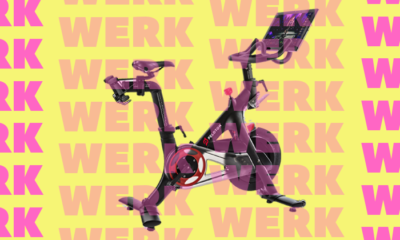Culture
Has Uber really left its brotastic culture behind?
A look at what’s changed — and what hasn’t — as the ride-hail company's rocky ride continues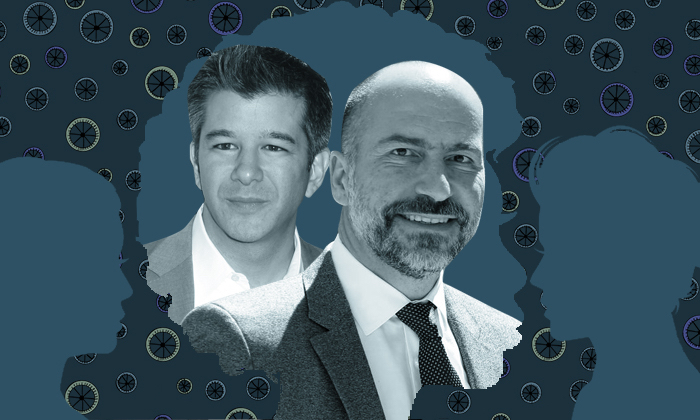
Updated 11:30 a.m. Aug. 9
Uber’s chief diversity and inclusion officer is not happy with the status quo. When it comes to the current gender and racial make-up of the ride-hail firm’s employees, the diversity report the company just issued shows there’s quite a lot of work to be done.
“It doesn’t help us to hide this data,” Uber’s Bo Young Lee told TechCrunch. “If you don’t face the reality, you can’t make progress…While I’m not necessarily happy about the results or data as it stands, it is progress as long as we face it without excusing it.”
For the first time, Uber included intersectional data in the diversity report it released in July, and it’s not a pretty picture, particularly at the top: Women overall hold under 14 percent of leadership roles in tech, while black and Latinx women have, oh, around 0 percent of those jobs, the report showed. Repeat: Zero, zilch, none. Across all divisions, men hold 72 percent of leadership roles.
The company has been under a microscope, financially speaking, since its extremely disappointing (and that’s putting it mildly) IPO in May, and its Q2 earnings release Thursday, which revealed the company recorded a whopping $5.2 billion loss in the last quarter. Wall Street is still on the hunt for answers, and the biggest question is pretty obvious: Is there a reason to think Uber will ever make any money?
But while the market pores over Uber’s 10-Q, what about the brotastic culture that spawned a zillion headlines, altered lives and was infamous enough to help make gender-biased workplaces an issue all companies need to examine? As the ride-hail firm works to rein in its spending and wow analysts with their big plans, is it simultaneously doing the necessary work to rebuild its once seemingly broken-beyond-repair culture?
Discussions with insiders and examinations of the facts reveal that the company certainly has started the work, but the depth of its commitment to diversity and inclusion — and whether it will outlast the positive PR it spawned — is still an open question, much like that pesky “will they ever turn a profit?” quandary.
CHARTING A COURSE TO DIVERSITY
To Lee’s point about facing “reality,” the release of the intersectional diversity report was indeed a crucial step towards fixing Uber’s bias issues; research shows that transparency in diversity numbers leads to positive change. For the first time, the company has set numeric goals for itself: By 2022, Uber plans to increase the number of women in more senior level engineering roles to 35 percent. In that time, it will also attempt to grow the number of “underrepresented employees” in mid-to-senior tech positions to 14 percent — not a big number by any means, but an improvement over the current composition of its tech team, which overall is 41 percent white and 48 percent Asian, and when it comes to leadership, nearly 51 percent white and 48 percent Asian.
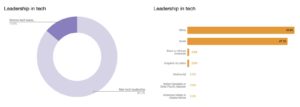
Leadership in tech, per Uber’s diversity report.
That Uber would chart a path to progress on the diversity and inclusion front was far from a given. Former CEO Travis Kalanick was ousted from the top role in May 2017 for creating a toxic workplace culture that included sexual harassment and discrimination, among other issues. Former Expedia-CEO Dara Khosrowshahi replaced him in August 2017. Kalanick still serves on Uber’s board and the two reportedly have an at times “chilly” relationship.
Sources say the difference between Kalanick and Khosrowshahi is like “night and day.” From the get-go — driven, at least in large part, by necessity — Khosrowshahi tried to publicly create tangible change in the company. Eight weeks into his new role, Khosrowshahi introduced a new very un-Kalanick-like credo: “We do the right thing, period.”
Now, Uber is tying its diversity and inclusion goals for 2022 to the compensation of several of its senior executives, including Khosrowshahi, chief financial officer Nelson Chai, chief legal officer Tony West and chief people officer Nikki Krishnamurthy.
The company has also started using the “Rooney Rule” for mid-career hires. Mallory Welty, who works within the recruiting team at Uber, explained to Boss Betty that the policy requires that at least one underrepresented person makes it to a final interview and debrief. Yes, just one. Welty also said the company now mandates that each panel that interviews potential hires has at least one female. Once again, just one.
Ebony Tucker, the advocacy director at the National Alliance to End Sexual Violence, was brought in as a consultant near the end of Kalanick’s time as CEO to run trainings and workshops on sexual violence and gender oppression. She said that, especially since the change in leadership at Uber, the staffers she has met and worked with at the company have a “strong commitment” to engage and see change.
“I think that as far as the education and training goes in connection with people…they’ve done a lot of that work,” she said during a phone interview. Tucker explained that the training, which focused on sexual assault and trauma, originally centered on the safety issue for riders and drivers, but a lot of the conversations with Uber staff also included discussions about the culture.
“I can say for the National Alliance, we have a very strong belief that if your internal culture is not better, then your external one is not either,” she said. “When people think Uber, they don’t always think, ‘Oh they have so much great corporate engagement around gender and sexual assault issues,’ but they actually really do.”
Last year, the company announced it would no longer require mandatory arbitration for individual claims of sexual assault or sexual harassment by Uber riders, drivers or employees. Claimants can also now, if they choose, settle their claims with Uber without a confidentiality provision that stops them from speaking about the incident. The company also committed to publishing a “safety transparency report” which will include data on sexual assault and other incidents that occur on the Uber platform, which means anything dealing with rides or deliveries.
The company does have mandatory training surrounding sexual harassment, according to Uber spokesperson Noah Edwardsen, and is additionally planning to roll out an enhanced education program for all employees dealing with “integrity, harassment, and diversity.” He also said that Uber has partnered with the Purple Campaign, a nonprofit organization with a mission to end workplace sexual harassment. Airbnb, Expedia and Amazon are doing the same. The companies work with the organization to create benchmarks in their efforts to address harassment at work and achieve a “Purple Certification,” Fortune reported.
However, one employee — who has been at the company for about two years — told Boss Betty they had not received any harassment training and were under the impression it was just for drivers. When asked to respond, Edwardsen said he was “not sure how that could be” the case, and reiterated that the training was mandatory for employees (drivers are not considered employees, which is a whole other bag of beans).
Though some in the tech community are glad the company is setting goals, sharing numbers, and moving towards accountability, there are still concerns that the company is not doing enough.
Ellen Pao, the ex-CEO of Reddit and a former partner at Kleiner Perkins Caufield & Byers, is one of the skeptics. Pao, who sued Kleiner Perkins for gender discrimination and co-founded the diversity consultancy Project Include, raised some specific worries during a July interview with Cheddar. The former VC said there was a lack of transparency throughout Uber’s diversity report, which made her “wonder if this is really just for PR and they’re gaming the system…. They’re trying to put out metrics that will work for them and aren’t actually going to work for their employees.”
She offered the example that Uber is still focused on binary gender, even through research done by her organization showed 5 percent of employees in the tech sector choose the nonbinary option in self-identification surveys. “You just wonder, is this really inclusive, is this really where the world is going, or are they still stuck in trying to clean up their PR and their image?”
Pao went on to say that getting CEOs directly involved in diversity and inclusion initiatives is the most effective course of action because it “starts from the top.” Uber’s head of diversity and inclusion does not report to the CEO, according to Pao, though Uber did not respond to requests for verification on that point. Former Attorney General Eric Holder, who in 2017 was brought on to investigate Uber’s cultural issues and lay out next steps, also recommended the head of diversity report directly to the CEO.
Harry Campbell, an ex-engineer who made a career as a ride-share expert after driving for Uber and Lyft, said he’s observed and heard about improvements to Uber’s culture, but also remains skeptical of the driving force. “It definitely seems like they’re working to improve in certain areas but all too often they’re not doing it until they get caught or until they get in trouble or busted or it becomes kind of a PR liability,” Campbell said. “What I would like to see is just them take more of a proactive approach to some of these issues that they know are out there but haven’t addressed.”
BACK IN THE BROTASTIC DAYS
Uber quickly built its reputation as a company that does not hesitate to step on toes — whether they be that of governments, competitors or individuals — to get ahead. Kalanick had put into place the company’s core values, which included “making bold bets,” being “obsessed” with the customer, and “always be hustlin’.” All this meant that Uber employees were often throwing their coworkers and department leaders under the bus in order to get ahead, the New York Times reported in 2017.
That attitude towards success built a toxic culture, one in which employees alleged that they were sexually harassed by supervisors and that complaints were often overlooked by the human resources department. The company’s party-party-party approach was far from inclusive — about as far as one can get. Infamous stories began to make the rounds, including a team visit to an escort-karaoke bar in Seoul and a memo from Kalanick sent ahead of a company outing titled, “URGENT, URGENT – READ THIS NOW OR ELSE!!!!!” that detailed the circumstances under which you could have sex with colleagues at the event (as well as a $200 “puke charge”).
Report after report of Uber’s unrestrained workplace culture was published in 2017. More than 20 Uber employees were fired in an investigation prompted by a February 2017 blog post (which went viral) by Susan Fowler, an ex-Uber engineer, detailing a poisonous culture. The reason for the dismissals included discrimination, sexual harassment, bullying and retaliation, among other grounds.
In May 2018, another former Uber engineer brought a sexual harassment lawsuit against the company, alleging colleagues harassed her and that Uber’s human resources department ignored her claims. Ingrid Avendaño, who was with Uber from 2014 to 2017, also said the company retaliated against her for filing complaints, refusing to give her earned raises and promotions. Avendaño cited one incident during which a male engineer told potential recruits that Uber was the “type of company where women can sleep their way to the top,” the New York Times reported.
After months of turmoil — including a video showing Kalanick in a heated argument with an Uber driver over fares — Kalanick stepped down as CEO and was replaced by Khosrowshahi.
“For me personally, and I think for a lot of drivers, it wasn’t really surprising,” said ride-share expert Campbell of Kalanick’s resignation. “There was this viral video of Uber’s former CEO arguing with a driver in the midst of all of this, kind of berating the driver and I think that sort of attitude towards drivers was already realized throughout the company.”
GROWING UP, GOING PUBLIC
On April 11, 2019, the ride-share company filed paperwork to go public, and in doing so, listed key risk factors. “Our workplace culture and forward-leaning approach created significant operational and cultural challenges that have in the past harmed, and may in the future continue to harm, our business results and financial condition,” the filing read.
The paperwork mentions the #DeleteUber campaign (during which hundreds of thousands of consumers deleted their accounts), Fowler’s blog post, a high-profile trade secrets lawsuit and a massive security breach that the company originally tried to cover up, as Quartz noted.
On Thursday, all eyes were on Uber’s net loss per share ($4.72), among other key financial metrics. But it’s not lost among industry observers, and many Uber employees, that even amid the fiscal gymnastics, the company needs to keep its eyes on the road to diversity and inclusion.
Welty, who just celebrated two years of working at the company, acknowledged that Uber still needs to exert a great deal of effort to bring in more women at the senior leadership level. With the departure of Arianna Huffington from the board last month, just two of its nine directors are women, so there’s one place to start.
“Just because something happened in the past doesn’t mean that’s the company we are today,” Welty said. Uber is working “not only to prevent anything similar to the Susan Fowler situation ever happening again,” she continued, but also to be a “leader among the tech giants” when it comes to creating a diverse workforce. A tall order for the once-disgraced company, to be sure.
Editor’s Picks
And just like that…
It’s 2022. Happy New Year! Can we still say that? Maybe just for this one last day? We’re happy to...
Wow, that naughty list is looong🧑🎄
The naughty or nice list Can you IMAGINE how long this newsletter would be if we actually got into the...


Time’s up on Time’s Up? – Cuomo’s cringey bro code – Casual misogyny of ‘Succession’
Is Time’s Up just getting a glow-up, or a legit overhaul? The status of Time’s Up, the nonprofit dedicated to...
Trending


Boss Betty✊: Why board talk isn’t boring – Amazon sued (again) for gender bias – Pinterest aims to put a pin in bias
Why we never get bored with board talk Business has replaced government as the most trusted institution in the world,...
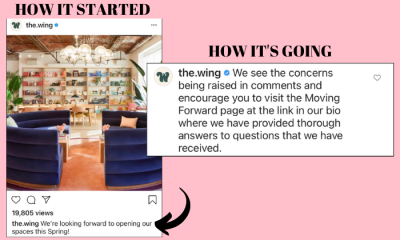

The Wing is reopening and some ex-employees — and former members — are not happy
The Wing posted on Instagram Wednesday that they would be reopening next week, starting with one of their Manhattan locations....
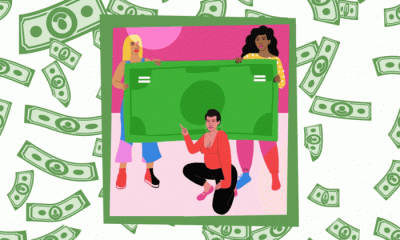

It’s Equal Pay Day, the ‘holiday’ we cannot wait to get rid of!
Hahaha, so cute that a year ago we asked, “What will post-pandemic, Equal Pay Day 2021 look like?” and here...




